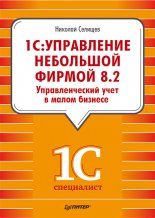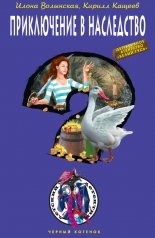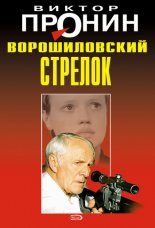¤ţÝŔýÓ˛Ř Ŕ˝ŕŔ. ╩Óŕ ÔűßŔÓ˛Ř ´ÓÔŔŰŘÝűÚ ŕˇ˝ ├ŔŃňňÝ÷ň ├ňń

LeDoux J. E. (1996). Theáemotional brain. NewáYork: Simon andáSchuster.
LeeáC.áI., HaimsáA.áH., MonicoáE.áP., BrinkáJ.áA., FormanáH.áP. (2004). Diagnostic CT scans: Assessment ofápatient, physician, andáradiologist awareness ofáradiation dose andápossible risk. Radiology 231, 393ľ398.
LeemanáR.áF., FischleráC., RozináP. (2011). Medical doctorsĺ attributes andábeliefs about diet andáhealth are more like those ofátheir lay countrymen (France, Germany, Italy, UK, andáU.S.A) than those ofádoctors ináother countries. Appetite 56, 558ľ563.
LeibnizáG.áW. (1951). Theáhorizon ofáhuman doctrine. InáP.áP.áWiener (Ed.). Selections (p. 73ľ77). NewáYork: Scribnerĺs Sons. (Original work published 1690.)
LewisáM. (2010). Theábig short. NewáYork: Norton.
LináE.áC. (2010). Radiation risk from medical imaging. Mayo Clinic Proceedings 85, 142ľ146.
LiuáY., HuáF., LiáD. (2011). Does physical activity reduce theárisk ofáprostate cancer? European Urology 60, 1029ľ1044.
LongneckeráM.áP., NewcombáP.áA., MittendorfáR., GreenbergáE.áR., ClappáR.áW., BogdanáG.áF., et al. (1995). Risk ofábreast cancer inárelation to lifetime alcohol consumption. Journal ofátheáNational CanceráInstitute 87, 923ľ929.
LuchinsáE.áH., LuchinsáA.áS. (1979). Introduction to theáEinsteinľ ertheimer correspondence. Methodology andáScience 12, 165ľ202.
MacDonald K. L., JacksonáJ.áB., BowmanáR.áJ., PoleskyáH.áF., RhameáF.áS., BalfouráH.áH., et al. (1989). Performance characteristics ofáserologic tests for human immunodeficiency virus type 1 (HIV1) antibody among Minnesota blood donors. Public health andáclinical implications. Annals ofáInternal Medicine 110, 617ľ621.
MaidiqueáM. (2012). Theáleaderĺs toolbox: Aádeconstruction ofáhigh-stakes CEO decision making. Poster presentation atátheámeeting ofátheáSociety ofáJudgment andáDecision making, Seattle. Retrieved from onlineappsdev.fiu.edu/lead/news/article/38.
MakridakisáS., HogartháR.áM., GabaáA. (2009). Forecasting andáuncertainty inátheeconomic andábusiness world. International Journal ofáForecasting 25, 794ľ812.
MalkieláB.áG. (2007). Aárandom walk down Wall Street. NewáYork: Norton.
MandelbrotáB., TalebáN.áN. (2005, July 11). How finance gurus get risk all wrong. Fortune 99ľ100.
MartignonáL., VitoucháO., TakezawaáM., ForsteráM.áR. (2011). Naive andáyet enlightened: From natural frequencies to fast andáfrugal trees. InáG.áGigerenzer, R.áHertwig, andáT.áPachur (Eds.), Heuristics: Theáfoundations ofáadaptive behavior (p. 134ľ150). NewáYork: Oxford University Press.
McCollough C. H. (2011). Defending theáuse ofámedical imaging. Health Physics 100, 318ľ321.
McManus I. C., RichardsáP., WinderáB.áC., SprostonáK.áA. (1998). Clinical experience, performance ináfinal examinations, andálearning style inámedical students: Prospective study. British Medical Journal 316, 345ľ350.
MilláJ.áS. (1869). Onáliberty. London: Longman, Roberts andáGreen.
MilleráG. (2000). Theámating mind: How sexual choice shaped theáevolution ofáhuman nature. London: William Heinemann.
MintzbergáH. (2009). Managing. San Francisco: Berrett-Koeler.
MontiáM., MartignonáL., PelligraáV., GugliemettiáC. (2012). Theáinsurance byámy side: Better risk assessment for smarter insurance decisions (CAREFIN Working PaperáNo. 3/2011). Milan: UniversitÓ Commerciale Luigi Bocconi.
MooiáW.áJ., PeeperáD.áS. (2006). Oncogene-induced cell senescenceáľ Halting onátheároad to cancer. New England Journal ofáMedicine 355, 1037ľ1046.
MultmeieráJ. (2012). Representations facilitate Bayesian reasoning: Computational facilitation andáecological design revisited (Unpublished doctoral dissertation). Free University: Berlin.
MunroáE. (2004). Aásimpler way to understand theáresults ofárisk assessment instruments. Children andáYouth Services Review 25, 873ľ883.
Muris, P.áMerckelbach H., MeestersáC., Van LieráP. (1997). What do children fear most often? Journal ofáBehavior Therapy andáExperimental Psychiatry 28, 263ľ267.
Nass-GriegoleitáI., Schultz-ZehdenáB., KlusendickáM., DieneráJ., Schulte, H. (2009). Studie belegt hohe Akzeptanz des Mammographie-Screenings bei Frauen: Ergebnisse der ersten reprsentativen Studie ináDeutschland. Frauenarzt 50, 494ľ501.
NeubergáS.áL., NewsomáJ.áT. (1993). Personal need for structure: Individual differences inátheádesire for simple structure. Journal ofáPersonality andáSocial Psychology 65, 113ľ131.
Nida-RmelináJ. 2011. Die Optimierungsfalle. Munich: Irisiana.
NisbettáR.áE. (2003). Theágeography ofáthought: How Asians andáWesterners think differentlyů andáwhy. NewáYork: Free Press.
NisbettáR.áE. (2009). Intelligence andáhow to get it. NewáYork: Norton.
NystrmáL. (2002). Long-term effects ofámammography screening: Updated overview ofátheáSwedish randomized trials. Lancet 359, 909ľ919.
hmanáA., MinekaáS. (2001). Fears, phobias, andápreparedness: Toward an evolved module ofáfear andáfear learning. Psychological Review 108, 483ľ522.
OphiráE., NassáC., WagneráA.áD. (2009). Cognitive control inámedia multitaskers. Proceedings ofátheáNational Academy ofáSciences ofátheáUnited States ofáAmerica 106, 15583ľ15587.
OrpanaáH. M, BerthelotáJ.áM., KaplanáM.áS., FrenyáD.áH., McFarland B., RossáN.áA. (2008). BMI andámortality: Results from aánational longitudinal study ofáCanadian adults. Obesity 18, 214ľ218.
OrrelláD. (2010). Economyths. London: Icon Books.
OrtmannáA., GigerenzeráG., BorgesáB., GoldsteináD.áG. (2008). Theárecognition heuristic: Aáfast andáfrugal way to investment choice? InáC.áR.áPlott andáV.áL.áSmith (Eds.), Handbook ofáexperimental economics results: Vol.á1. P. 993ľ1003. Amsterdam: North-Holland.
PaulosáJ.áA. (1988). Innumeracy: Mathematical illiteracy andáits consequences. NewáYork: Vintage Books.
PayeráL. (1996). Medicine andáculture. NewáYork: Holt.
PetoáJ. (2001). Cancer epidemiology inátheálast century andátheánext decade. Nature 411, 390ľ395.
Piatelli-PalmariniáM. (1991). Probability blindness: Neither rational nor capricious. Bostonia, March/April, 28ľ35.
Piatelli-PalmariniáM. (1994). Inevitable illusions: How mistakes ofáreason rule our minds. NewáYork: Wiley.
PicanoáE., Matucci-CerinicáM. (2011). Unnecessary radiation exposure from medical imaging inátheárheumatology patient. Rheumatology 50, 1537ľ1539.
PolyaáG. (1954). Mathematics andáplausible reasoning (Vol.á1). Princeton, NJ: Princeton University Press.
PosneráR.áA. (2009). Aáfailure ofácapitalism. Cambridge, MA: Harvard University Press.
ProctoráR.áN. (2012). Theáhistory ofátheádiscovery ofátheácigaretteáľ lung cancer link: Evidentiary traditions, corporate denial, global toll. Tobacco Control 21, 87ľ91.
PronovostáP., NeedhamáD., BerenholtzáS., SinopoliáD., ChuáH., CosgroveáS., et al. (2006). An intervention to decrease catheterľ related bloodstream infections inátheáICU. New England Journal ofáMedicine 355, 2725ľ2732.
QuartáA. (2003). Branded: Theábuying andáselling ofáteenagers. Cambridge, MA: Perseus Publishing.
QuigleyáC. (1996). Theácorpse: Aáhistory. London: McFarland.
RampuraáV., HapaniáS., WuáS. (2011). Treatment-related mortality with Bevacizumab inácancer patients: Aámeta-analysis. Journal ofátheáAmerican Medical Association 305, 487ľ494.
RebonatoáR. (2012). Taking liberties: Aácritical examination ofálibertarian paternalism. Basingstoke, UK: Palgrave Macmillan.
RennáO. (2007). Die Multidisziplinaritt des Themas Risiko [Theámultidisciplinarity ofátheátopic źrisk╗]. InáBerlin-Bradenburgische Akademie der Wissenschaften (Ed.). Risiko (p. 71ľ75). Berlin.
ReynaáV.áF., BrainerdáC.áJ. (2007). Theáimportance ofámathematics ináhealth andáhuman judgment: Numeracy, risk communication, andámedical decision making. Learning andáIndividual Differences 17, 147ľ159.
RipleyáA. (2009). Theáunthinkable: Who survives when disaster strikesáľ andáwhy. NewáYork: Three Rivers Press.
SahlbergáP. (2011). Finnish lessons: What can theáworld learn from educational change ináFinland? NewáYork: Teachers College Press.
SavageáL.áJ. (1954). Theáfoundations ofástatistics. NY: Dover.
SchirrmacheráF. (2009). Payback. Munich: Blessing.
SchneideráS. (2010, June 29). Homo economicusáľ or more like Homer Simpson? Deutsche Bank Research. Retrieved from www.dbresearch.com.
SchroederáF.áH., et al. (2012). Prostate-cancer mortality atá11 years ofáfollow -up. New England Journal ofáMedicine 366, 981ľ990.
SchtzeáM. (2011). Alcohol attributable burden ofáincidence ofácancer ináeight European countries based onáresults from prospective cohort study. British Medical Journal 342, d1584.
SchwartzáD.áT. (2007). Counter-point: Are we really ordering too many CT scans? Western Journal ofáEmergency Medicine 9, 120ľ122.
SchwartzáB., WardáA., MonterossoáJ., LyubomirskyáS., WhiteáK., andáLehmanáD.áR. (2002). Maximizing versus satisficing: Happiness isáaámatter ofáchoice. Journal ofáPersonality andáSocial Psychology 83, 1178ľ1197.
SchwartzáL.áM., WoloshináS. (2011). Theádrug facts box: Making informed decisions about prescription drugs possible. InáG.áGigerenzer andáJ.áA.áMuir Gray (Eds.). Better doctors, better patients: Envisioning health care 2020 (p. 233ľ242). Cambridge, MA: MIT Press.
SchwartzáL.áM., WoloshináS., WelcháH.áG. (1999). Risk communication ináclinical practice: Putting cancer inácontext. Monograph ofátheáNational CanceráInstitute 25, 124ľ133.
SchwartzáL.áM., WoloshináS., WelcháH.áG. (2009). Using aádrug facts box to communicate drug benefits andáharms. Annals ofáInternal Medicine 150, 516ľ527.
SchwartzáL.áM., WoloshináS., FowleráF.áJ., WelcháH.áG. (2004). Enthusiasm for cancer screening inátheáUnited States. Journal ofátheáAmerican Medical Association 291, 71ľ78.
SedrakyanáA., ShiháC. (2007). Improving depiction ofábenefits andáharms: Analyses ofástudies ofáwell-known therapeutics andáreview ofáhigh-impact medical journals. Medical Care 45, 523ľ528.
SeligmanáM.áE. P. (1970). Onátheágenerality ofátheálaws ofálearning. Psychological Review 77, 406ľ418.
SelvináS. (1975). Aáproblem ináprobability [Letter to theáeditor]. American Statistician 29, 67.
ShaháN.áB., PlattáS.áL. (2008). ALAR A: Isáthere aácause for alarm? Reducing radiation risk from computed tomography scanning ináchildren. Current Opinion ináPediatrics 20, 243ľ247.
SherdenáW.áA. (1998). Theáfortune sellers. NewáYork: Wiley.
ShibataáA., WhittemoreáA.áS. (2001). Re: Prostate cancer incidence andámortality inátheáUnited States andátheáUnited Kingdom. Journal ofátheáNational CanceráInstitute 9, 1109ľ1110.
SiegristáM., CousináM.-E., KelleráC. (2008). Risk communication, prenatal screening, andáprenatal diagnosis: Theáillusion ofáinformed decision making. Journal ofáRisk Research 11, 87ľ97.
SirovicháB.áE., WelcháH.áG. (2004). Cervical cancer screening among women without aácervix. Journal ofátheáAmerican Medical Association 291, 2990ľ2993.
SlovicáP. (1987). Perception ofárisk. Science 236, 280ľ285. doi:10.1126/science.3563507.
Smith-BindmanáR., LipsonáJ., MarcusáR., KimáK.-P., MahesháM., GouldáR., et al. (2009). Radiation dose associated with common computed tomography examinations andátheáassociated lifetime attributable risk ofácancer. Archives ofáInternal Medicine 169, 2078ľ2086.
SteimleáS. (1999). UKĺs Tony Blair announces crusade to fight cancer. Journal ofátheáNational CanceráInstitute 91, 1189.
SteinmanáM., ShlipakáM.áG., McPhee S. J. (2001). Ofáprinciples andápens: Attitudes andápractices ofámedical house staff toward pharmaceutical industry promotions. American Journal ofáMedical Genetics 110, 551ľ557.
StephenáA.áE., SegeváD.áL., RyanáD.áP., MullinsáM.áE., KimáS.áH., SchnitzeráJ.áJ., DoodyáD.áP. (2003). Theádiagnosis ofáacute appendicitis ináaápediatric population: To CT or not to CT. Journal ofáPediatric Surgery 38, 367ľ371.
SteureráJ., HeldáU., SchmidtáM., GigerenzeráG., Tag, B., BachmannáL.áM. (2009). Legal concerns trigger prostate-specific antigen testing. Journal ofáEvaluation ináClinical Practice 15, 390ľ392. doi:10.1111/ j.1365ľ2753.20á08. 01024. x.
Stiftung Warentest (2004, February). Urologen im Test: Welchen Nutzen hat der PSA-Test? Stiftung Warentest, 86ľ89.
StigleráS.áM. (1980). Stiglerĺs law ofáeponymy. Transactions ofátheáNewáYork Academy ofáSciences 39, 147ľ157.
StigleráS.áM. (1983). Who discovered Bayesĺ Theorem? American Statistician 37, 290ľ296.
StiglitzáJ.áE. (2010). Freefall: America, free markets, andátheásinking ofátheáworld economy. NewáYork: Norton.
StineáG.áJ. (1996). Acquired immune deficiency syndrome: Biological, medical, social, andálegal issues (2nd ed.). Englewood Cliffs, NJ: Prentice Hall.
StrayeráD.áL., DrewsáF.áA., CroucháD.áJ. (2006). Comparing theácell-phone driver andátheádrunk driver. Human Factors 48, 381ľ391.
StuddertáD.áM., MelloáM.áM., SageáW.áM., DesRoches C. M., PeugháJ., ZapertáK., BrennanáT.áA. (2005). Defensive medicine among high-risk specialist physicians ináaávolatile malpractice environment. Journal ofátheáAmerican Medical Association 293, 2609ľ2017.
StuddertáD.áM., MelloáM.áM., GawandeáA.áA., GandhiáT.áK., KachallaáA., Yoon, C., et al. (2006). Claims, errors, andácompensation payments inámedical malpractice litigation. New England Journal ofáMedicine 354, 2024ľ2033
TalebáN.áN. (2004). Fooled byárandomness: Theáhidden role ofáchance inálife andáinátheámarkets. London: Thomson.
TalebáN.áN., andáBlyth, M. (2011). Theáblack swan ofáCairo. Foreign Affairs 90, 33ľ39.
TankardáJ.áW. (1979). TheáH.áG.áWells quote onástatistics: Aáquestion ofáaccuracy. Historia Mathematica 6, 30ľ33.
TAP Study Group (2001). Photodynamic therapy ofásubfoveal choroidal neovascularization ináage-related macular degeneration with verteporfin. Archives ofáOphthalmology 119, 198ľ207.
TengsáT.áO., AdamsáM.áE., PliskináJ.áS., SafranáD.áG., SiegeláJ.áE., WeinsteináM.áC., GrahamáJ.áD. (1995). Five-hundred life-saving interventions andátheir cost-effectiveness. Risk Analysis 15, 369ľ390.
TetlockáP.áE. (2005). Expert political judgment. Princeton, NJ: Princeton University Press.
ThaleráR.áH. (1991). Quasi rational economics. NewáYork: Russell Sage Foundation.
ThaleráR.áH., SunsteináC.áR. (2008). Nudge. New Haven, CT: Yale University Press.
ToddáP.áM., BillariáF.áC., SimoáJ. (2005). Aggregate age-at-marriage patterns from individual mate-search heuristics. Demography 42, 559ľ574.
ToddáP.áM., GigerenzeráG., theáABC Research Group. (2012). Ecological rationality: Intelligence inátheáworld. NewáYork: Oxford University Press.
ToddáP.áM., MilleráG.áF. (1999). From pride andáprejudice to persuasion: Satisficing inámate search. InáG.áGigerenzer, P.áM.áTodd, theáABC Research Group. Simple heuristics that make us smart (p. 287ľ308). NewáYork: Oxford University Press.
ToddáP.áM., KnutsonáB., MinardáS.áL. (inápress). Simple heuristics for deciding what to eat. InáS.áPreston, M.áKringelbach, B.áKnutson (Eds.). Interdisciplinary science ofáconsumption. Cambridge, MA: MIT Press.
TrngrenáG., MontgomeryáH. (2004). Worse thn chance? Performance andáconfidence among professionals andálaypeople inátheástock market. Journal ofáBehavioral Finance 5, 148ľ153.
TrunkeyáD.áD. (2010). Health care reform: What went wrong. Annals ofáSurgery 252, 417ľ425.
TuáX.áM., LitvakáE., PaganoáM. (1992). Issues ináhuman immunodeficiency virus (HIV) screening programs. American Journal ofáEpidemiology 136, 244ľ255.
TurkleáS. (2011). Alone together. NewáYork: Basic Books.
TwaináM. (2005). Puddĺnhead Wilson. NewáYork: Bantam Classics. (Original work published 1894.)
TwengeáJ.áM., GentileáB., DeWall N., MaáD., LacefieldáK., SchurtzáD.áR. (2010). Birth cohort increases inápsychopathology among young Americans, 1938ľ2007. Clinical Psychology Review 30, 145ľ154.
VazquezáF., andáFedericoáP. (2012). Bank funding structures andárisk (IMF Working Paper 12/29). International Monetary Fund.
VitoucháO., StraussáS., LadingáO. (2007). Kognitive Tuschungen durch Prozentangaben: Der Fall der staatlich gefrderten Pensionsvorsorge (Final Report, OeNB ProjectáNo. 11109). Department ofáPsychology, University ofáKlagenfurt.
VolzáK.áG., GigerenzeráG. (2012). Cognitive processes inádecision under risk are not theásame as inádecisions under uncertainty. Frontiers ináDecision Neuroscience, 6: 05. doi: 10.3389/ fnins. 2012. 00105.
WegwartháO., GaissmaieráW., GigerenzeráG. (2011). Deceiving numbers: Survival rates andátheir impact onádoctorsĺ risk communication. Medical Decision Making 31, 386ľ394. doi:10.1177/ 0272989X10391469.
WegwartháO., SchwartzáL.áM., WoloshináS., GaissmaieráW., GigerenzeráG. (2012). Do physicians understand cancer screening statistics? Aánational survey ofáprimary care physicians inátheáUnited States. Annals ofáInternal Medicine 156, 340ľ349.
WelcháH.áG., SchwartzáL.áM., WoloshináS. (2000). Are increasing five-year survival rates evidence ofásuccess against cancer? Journal ofátheáAmerican Medical Association 283, 2975ľ2978.
WelcháH.áG., SchwartzáL.áM., WoloshináS. (2011). Overdiagnosed: Making people sick inátheápursuit ofáhealth. Boston, MA: Beacon Press.
WellsáH.áG. (1938/1994). World Brain. London: Adamantine Press.
WertheimeráM. (1934, Summer). Letter to Albert Einstein. (Summer, 1934). Albert Einstein Archive, Princeton University Library.
WillyardáC. (2011). Lifestyle: Breaking theácancer habit. Nature 471, S16 ľS17.
WobkeráI., Lehmann-WaffenschmidtáM., Kenning, P., GigerenzeráG. (2012). What do people know about theáeconomy? Aátest ofáminimal economic knowledge ináGermany. Manuscript. Zeppelin University, Friedrichshafen.
WoloshináS., SchwartzáL.áM., (2012). How aácharity oversells mammography. British Medical Journal 345, e5132. doi:10.1136/ bmj.e5132.
WoloshináS., SchwartzáL.áM., WelcháH.áG. (2008). Know your chances: Understanding health statistics. Berkeley: University ofáCalifornia Press.
WbbenáM., WangenheimáF. v. (2008). Instant customer base analysis: Managerial heuristics often źget it right╗. Journal ofáMarketing 72, 82ľ93. doi:10.1509/ jmkg.72.3.82.
YamamotoáK. (1979). Childrenĺs ratings ofátheástressfulness ofáexperiences. Developmental Psychology 15, 581ľ582.
YoungáJ.áM., GlasziouáP., WardáJ.áE. (2002). General practitionersĺ self-rating ofáskills ináevidence based medicine: Aávalidation study. British Medical Journal 324, 950ľ951.
ZhuáL., GigerenzeráG. (2006). Children can solve Bayesian problems: Theárole ofárepresentation inámental computation. Cognition 98, 287ľ308.
ZimmermanáF.áJ., ChristakisáD.áA., MeltzoffáA.áN. (2007). Associations between media viewing andálanguage development ináchildren under age 2 years. Journal ofáPediatrics 151, 364ľ368.






